
Uluru (or Ayers) Rock is located in the central part of Australia. Its
height is 348 m, width - 3 km, length - 3.6 km. Depending on the
position of the sun, this red sandstone formation changes its coloring
from dark purple to gold.
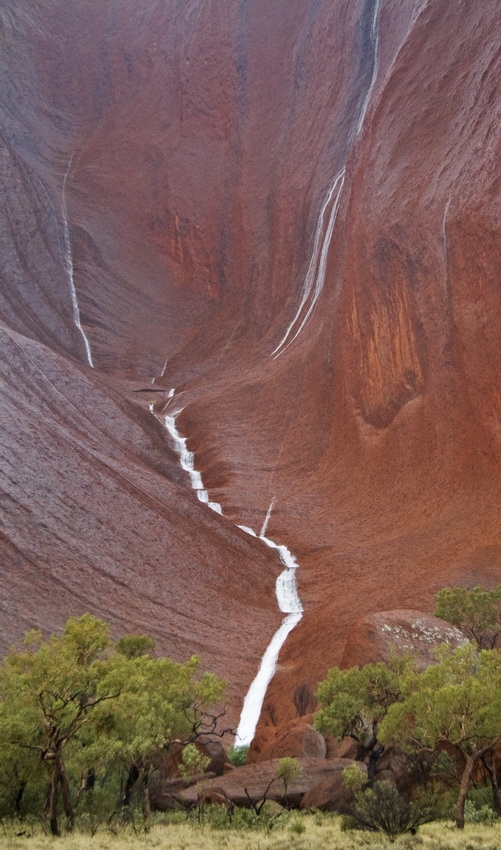
Amazing views of Uluru Rock no doubt will impress you.
The desert that was once the bottom of an ancient sea stretches from
horizon to horizon in the very heart of Australia. And in the middle of
that desert there suddenly appears a rock. Out of nowhere, like an
island.
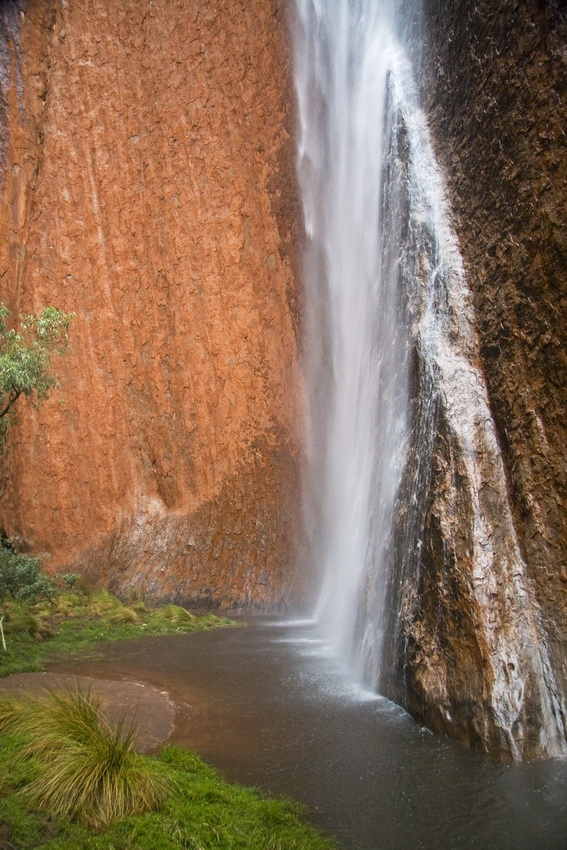
This lump of sandstone of more than 300 m tall with an area of 2 square
kilometers is the peak of the mountain destroyed by erosion. It
probably stretches underground for more than 6 km.

Debris washed from the rock are accumulated at its foot, and the rock
turns out to be deeper and deeper under the ground. You may notice that
the layers of sandstone lie vertically when in fact they are supposed to
lie horizontally. The point is that 300 million years ago there was a
powerful earthquake that lifted up the bottom of the ocean and resulted
in formation of vertical layers.
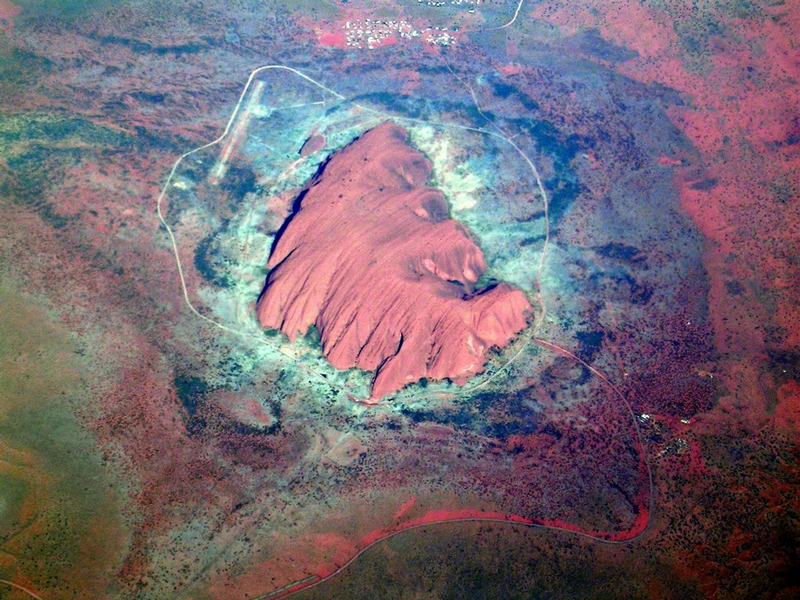
At first glance it seems that the rock is lifeless, but later you
understand that it's kind of an oasis in the desert. Many plants around
it are fed by water flowing from the rock during desert storms.
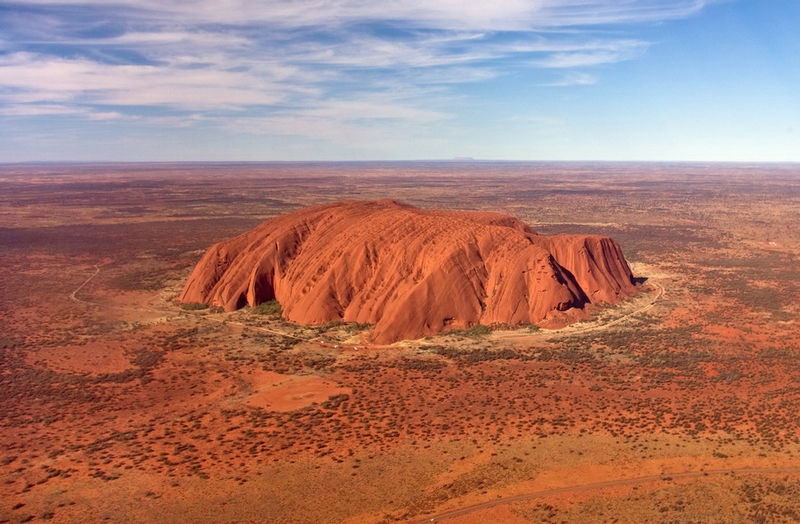
At the foot of the rock there is a source where the native people have
always been hunting. Kangaroos and other animals come to the source to
drink and enjoy the fruits and seeds of plants.
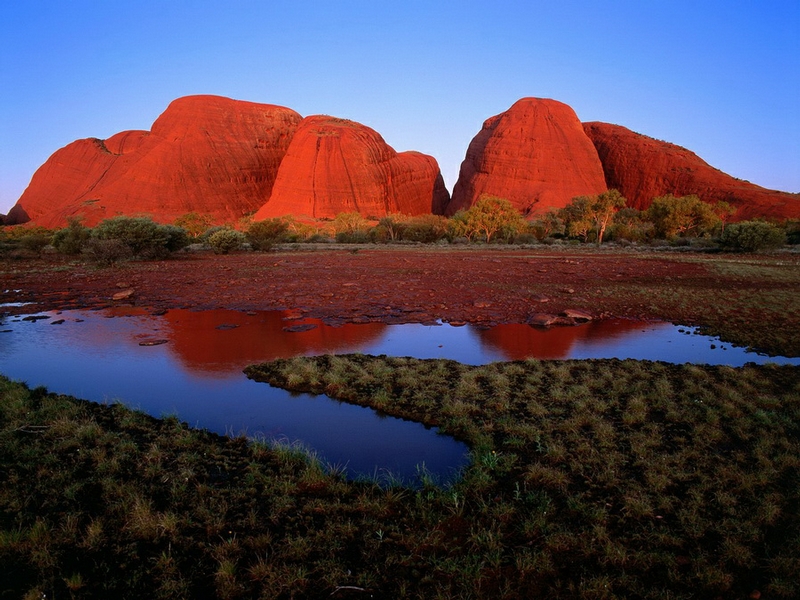
As you already know, the rock has two names: Uluru and Evers. These two
names represent two very different world views. Researchers have found
this rock and called it in honor of then Governor of South Australia,
Henry Eevers. And though the rock has never belonged to this man, the
name remained.
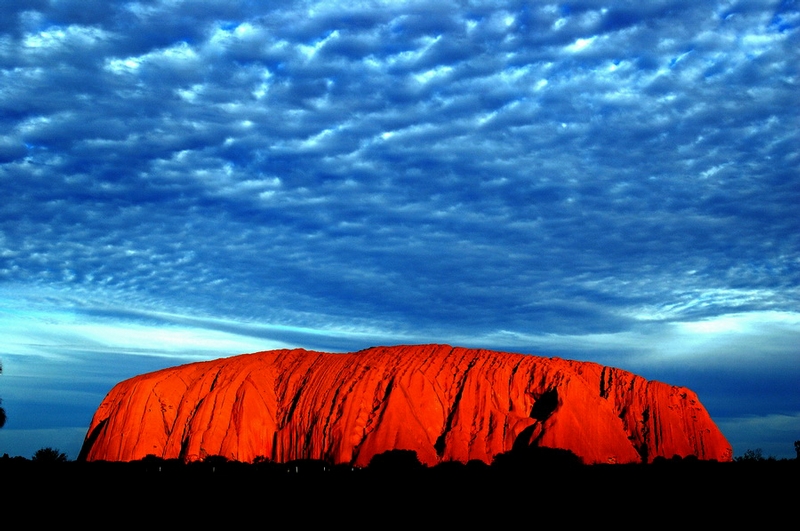
Aborigines called this rock Uluru. They are tightly linked with their land.

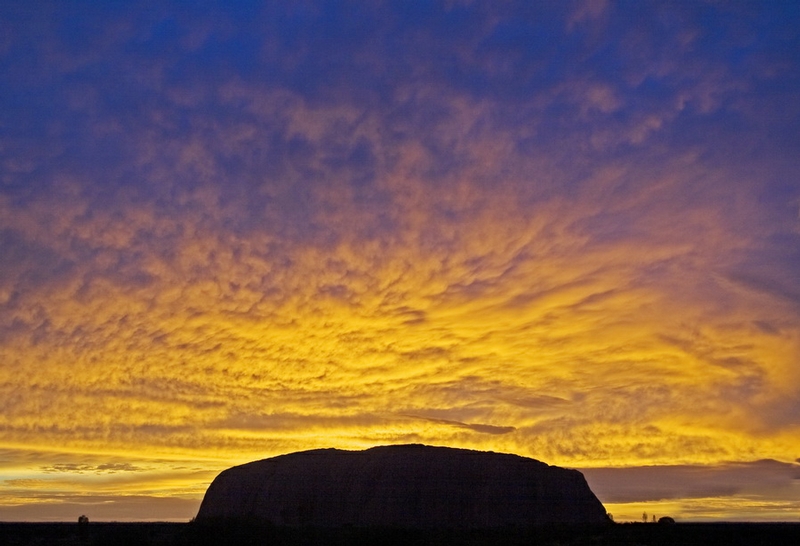
Australians call this dry region the dead heart of Australia. But for
the Aborigins both Uluru and everything that surrounds it are alive.


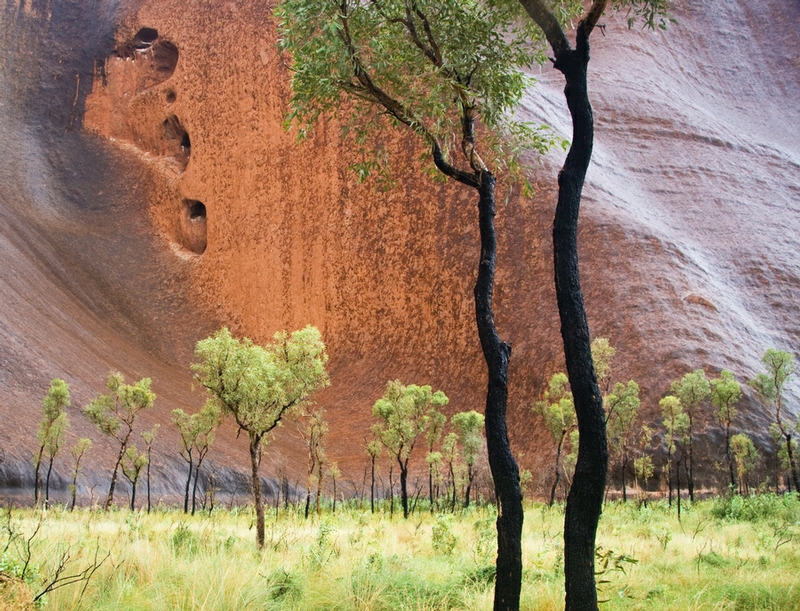
The desert can boast of its various flora and fauna: shrubs, kangaroos,
prickly lizards, and many other interesting species of wildlife.
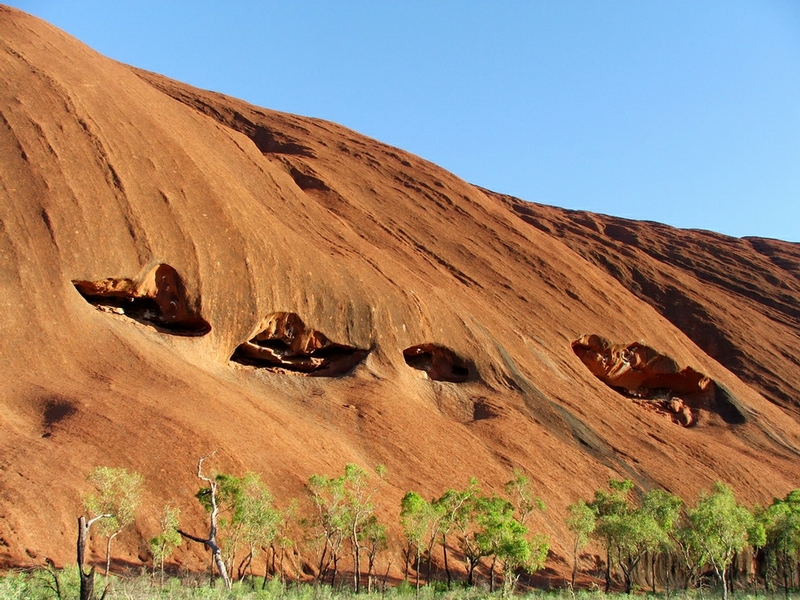
To see Uluru at different times of a day means to enjoy the fine play of light and shadow.

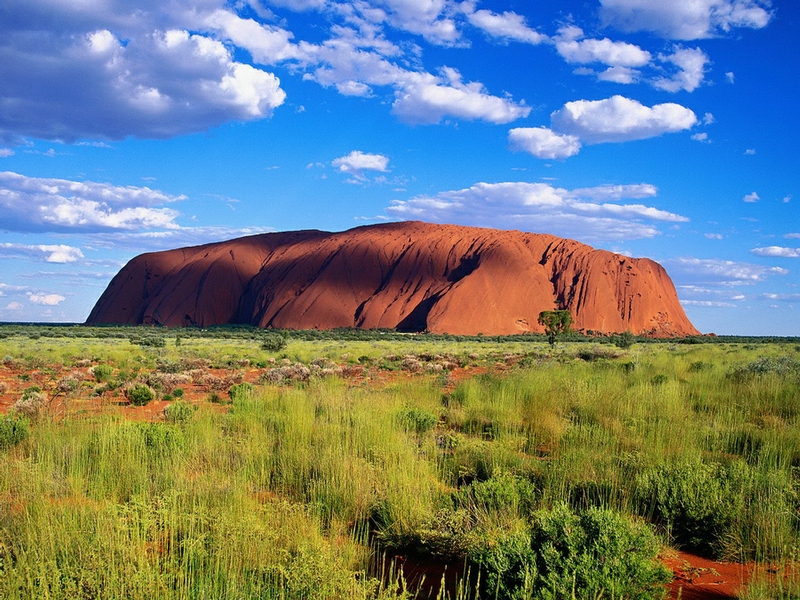
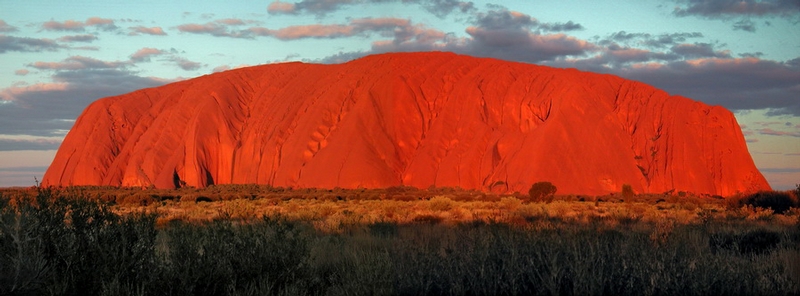
Uluru reminds the native people and all people around of the time of
dreams and oral traditions - the foundation of cultural heritage.
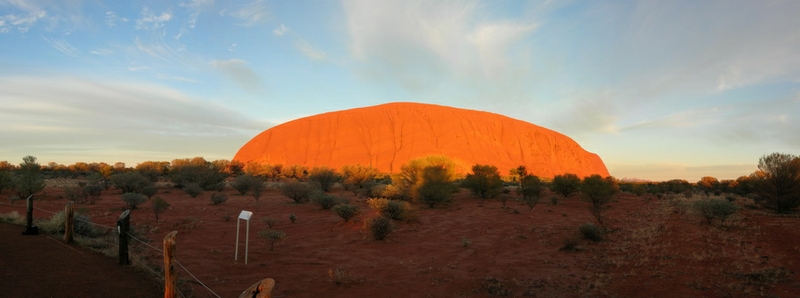
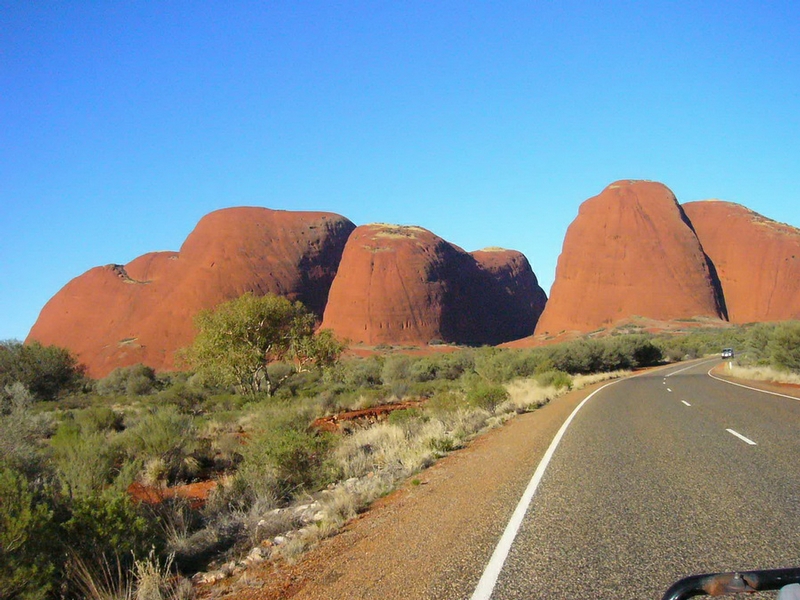
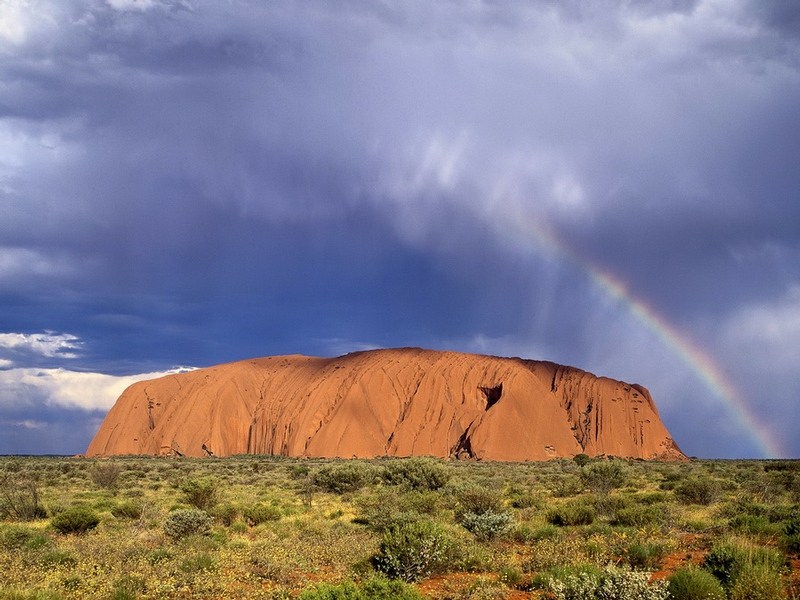
Over the 10.000 years the native people come to Uluru to perform their
rites and tell their legends about the birth of the world.


The entry to the place where rites are performed is strictly closed.

And the place is under UNESCO protection.
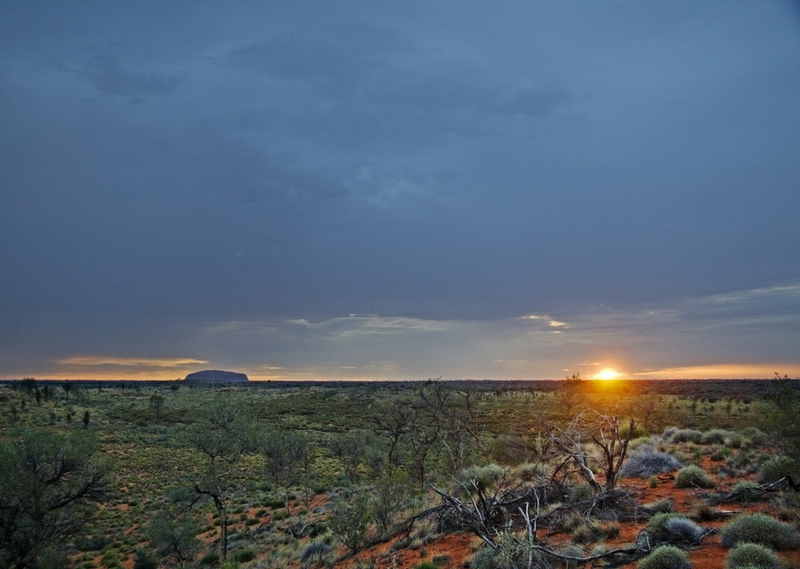
via affinity4you and it-tours.com
0 comments:
Post a Comment